International cheese expert Juliet Harbutt on why she has returned to the Hawke’s Bay to set up Hunter Gatherer food, wine tours and cheese tastings
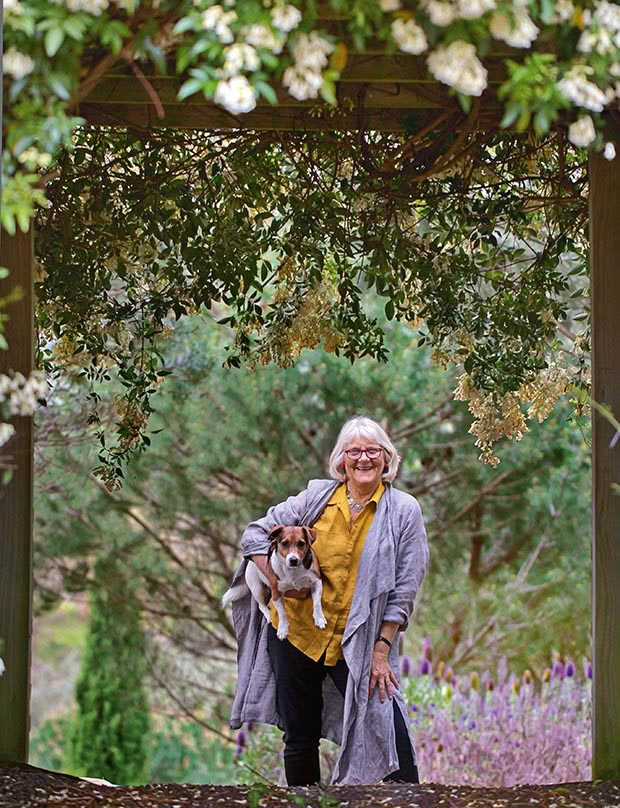
Impelled to return to Aotearoa by our glorious beaches and a vibrant artisan food culture, global cheese aficionado Juliet Harbutt now hosts foodie tours from her home with vineyard views.
Words Anna Tait-Jamieson Photos: Tessa Chrisp
Nothing if not determined, Juliet Harbutt raises her rolling pin and brings it down hard on a small pile of pine nuts. Several strikes later she’s rewarded with a mound of smashed shells and a few intact kernels. It’s clearly not the best way to crack a nut but the kernels taste sweet and with 30 mature trees dropping pine cones all over her Hawke’s Bay garden, she’s driven to at least make an effort.
“I’d make a fortune,” she says, in between whacks, “if only I could find a better way to do this.”
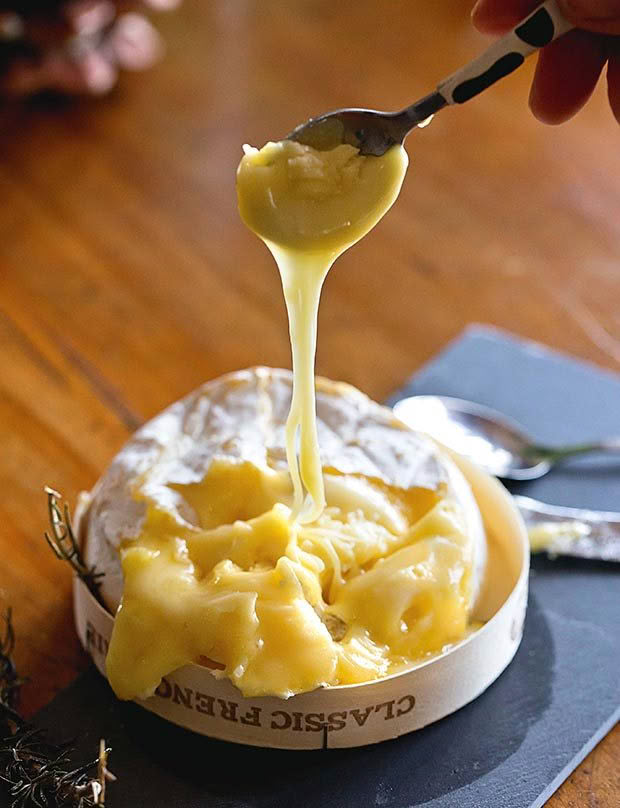
Juliet’s cheese tastings are organised according to her own classification system, based on the appearance and texture of the rind. Seen here are examples of three categories: blue, soft white rind and semi-soft washed rind. The runny camembert has been baked.
She’s only half joking. If anyone can turn a challenge into an opportunity it’s Juliet – a New Zealander whose single-minded enthusiasm for cheese has served her well for the past 35 years. Back then she set her mind to making a living (if not a fortune) from her new-found passion. Today she’s a world authority in her field: an author, columnist, guest broadcaster, educator, speaker and vocal supporter of artisan cheese.
It all started one memorable moment in Paris. It was the early 1980s and she was taking a break from her Wellington delicatessen to check out the food scene in Europe. A visit to a specialist Parisian wine merchant promised to be an interesting tasting but, while she doesn’t recall the wine, Juliet will never forget the cheese that came with it.
“One was a chèvre from the Loire (and I’d never tasted a goat’s cheese), another was an exquisite blue and the third, a triple-cream cheese. I thought, ‘Oh my god, if this is cheese it’s amazing!’”
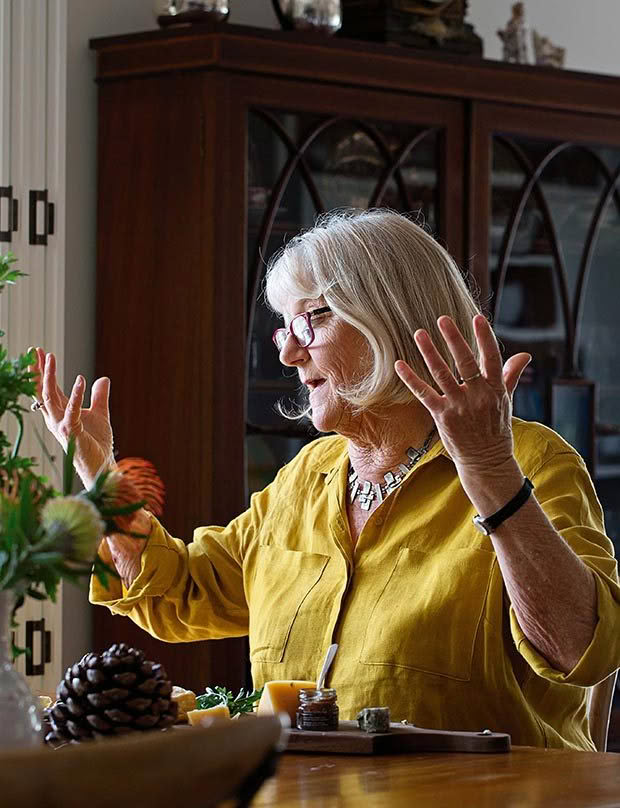
In New Zealand the height of sophistication at the time was canned camembert from Denmark (“you had to open the tin to see how ripe it was”), so this was truly a revelation. She followed it up by sniffing and tasting her way around the fromageries of Paris with the idea of opening a cheese shop herself – not in New Zealand, but in London where surprisingly no one was doing it “like the French”.
She returned to Wellington just long enough to sell her deli and then flew straight back to Europe to learn all she could about tasting, ripening and selling cheese. In 1985 she opened Jeroboams, The Wine and Cheese Shop with her partner whose interest was wine. The South Kensington store stocked more than 250 French and British cheeses, most of them made from raw milk.
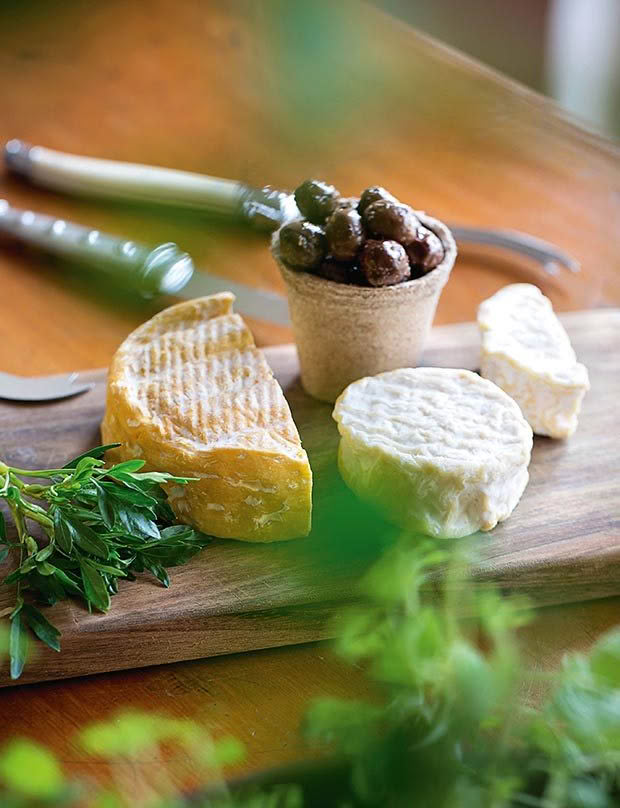
It was an immediate success, attracting food lovers from across London, including luminaries such as Elizabeth David (Britain’s ‘first lady of food’) and cookery writer Jane Grigson. It established Juliet as a cheesemonger of note.
She was inevitably swept up in her newfound enthusiasm for British artisan cheese. “We opened during that regeneration period – the neo-rural movement of the mid to late 80s – when a whole lot of people from the cities were moving out to the country and thinking about what they could do with their lives. A lot of them said, ‘Let’s make cheese’.”
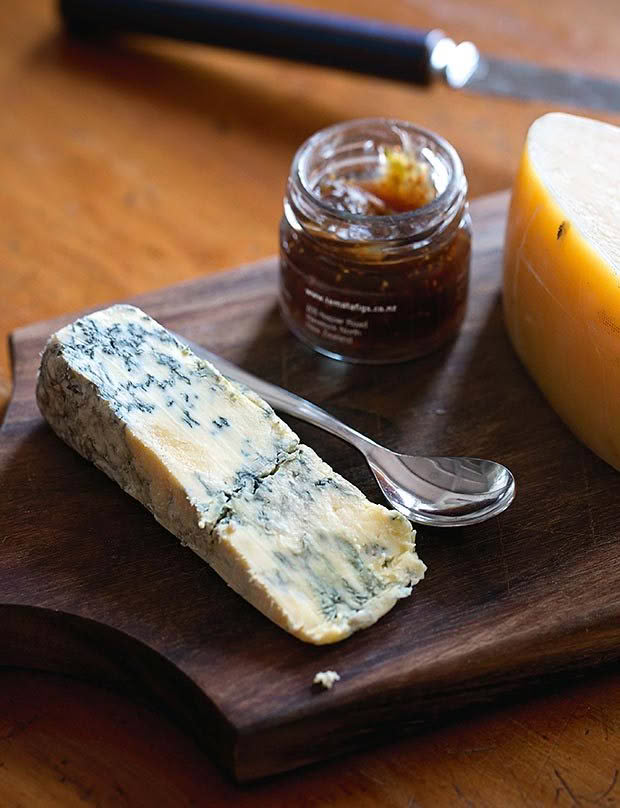
For the next few years she championed such producers, notably working with supermarket giant Tesco to promote regional cheese selections (a radical idea at the time) and establishing The British Cheese Awards.
She set the ground rules and turned the focus on the cheesemakers. “It changed their market because suddenly someone was promoting artisan cheeses in a big way and they were available in supermarkets. It placed modern British producers on the map.”

Juliet ran the awards for 21 years, during which time she launched The Great British Cheese Festival and helped establish the Specialist Cheesemakers Association. She also wrote books, most recently her award-winning World Cheese Book. Published in nine languages and now in its second edition, it takes pride of place on the hall table at her home in Hawke’s Bay.
Her return ‘home’ was made easier because she’d never lost touch. She had a long-running column in NZ House & Garden and hosted numerous masterclasses, workshops and fundraising events for cheese lovers, chefs and retailers. She could have happily stayed in the UK but says she had reached a point in her life when she needed to make some work/life decisions.
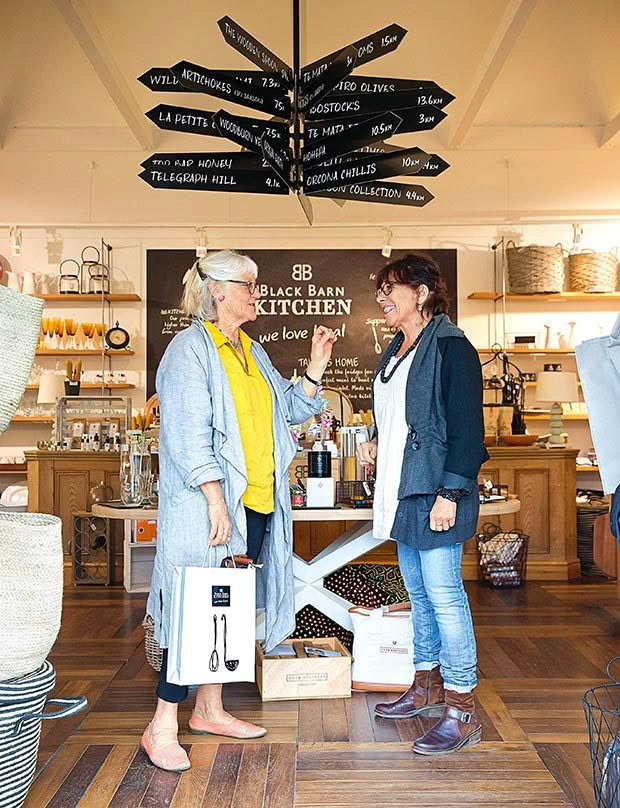
Juliet shares her enthusiasm for Hawke’s Bay produce with Paula van der Meer, manager of Black Barn Kitchen. The cast-iron cheese baker (below) was made for Juliet by a farrier in her Cotswold village. Its long handle is designed for an open fire and the base fits a Vacherin Mont-d’Or or a camembert.
“I thought that if I was ever to go back to New Zealand it would need to be soon, while I’m still young enough to do something new, something exciting; to see my nieces and nephews grow up and reconnect with all my old friends. Plus I missed the beaches.”
In 2015 she sold the British Cheese Awards, sold her 16th-century home in the Cotswolds and bought the house of her dreams in Hawke’s Bay. Situated on the upper slopes of the Black Barn Estate, it has big sky views from the terrace, mature trees and a large garden for Winston her lively Jack Russell.
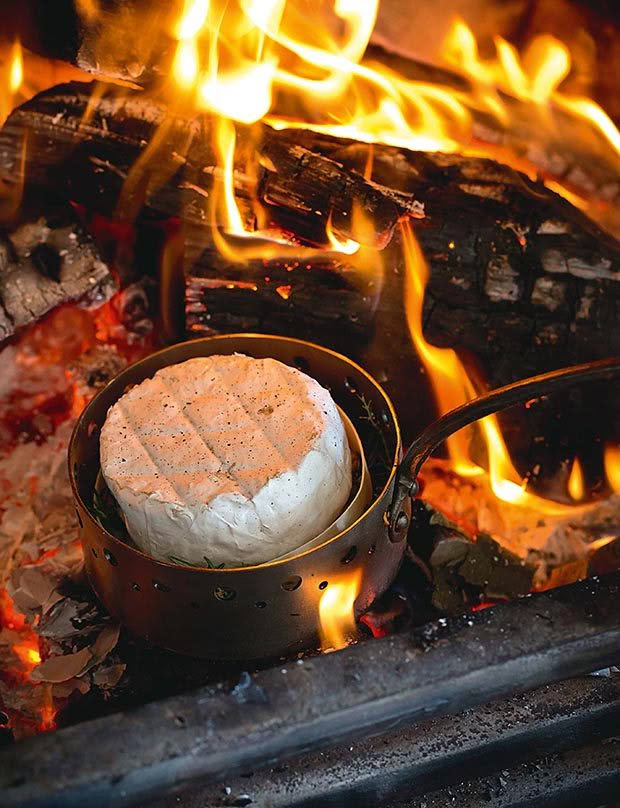
To bake a whole cheese, remove wrapping and put it back in its wooden box (or a ceramic cheese baker) with a few sprigs of rosemary or thyme poked underneath it. Bake at 180°C in a preheated oven for 15-20 minutes. When the centre is soft and runny, slice off the top rind and use a spoon to dip in. A drizzle of honey is a nice addition.
Designed by local farmer-cum-entrepreneur-cum-architectural designer Andy Coltart, and built for relaxed, open-plan living, at its heart is a long wooden table from which Juliet runs her life and her business. Today it’s strewn with piles of paperwork that cannot be disturbed: research notes for a series of guest lectures she’s giving at the University of Gastronomic Sciences in Northern Italy. Clearly she didn’t come back to New Zealand to retire.
“No. I want to work with the cheesemakers. I’d like to promote their cheeses through masterclasses, tastings and events in Hawke’s Bay and nationally. But it’s a small market and the industry lacks the cohesion of the British artisan cheesemakers, so it will take time for me to win their confidence and support.”
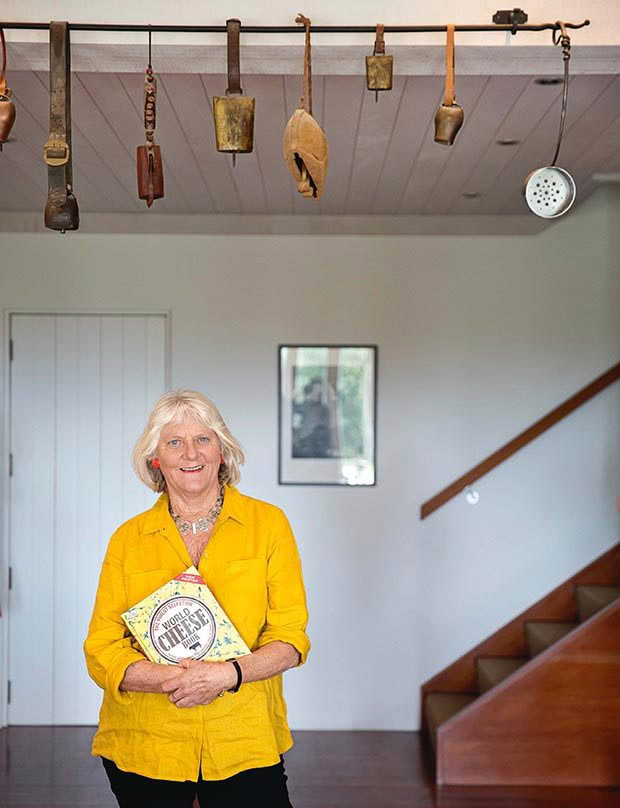
“I’ve always liked Hawke’s Bay. I have special friends here and love the climate. With wine and wonderful food, it kind-of reminds me of the Mediterranean where I loved going for holidays – Corsica, Cyprus, those sort of places.”
She is already working with a handful of cheesemakers, including Hellene Lamb at Cranky Goat who says her input is proving invaluable. “What she doesn’t know about cheese isn’t worth knowing,” says Hellene. “We send her our cheeses for critiquing and she tells us how to improve them. She warned us she could be blunt – once she told me, ‘My dear, don’t ever do that again’ – but finally here’s someone who will say what is good and what is bad. If she likes it, we know it’s a good cheese.”
Juliet has a reputation for calling a cheese a cheese. Her commentary is not always welcome, but it’s fair and well informed. She notes the sameness of mid-range cheeses in New Zealand and the tendency for cheesemakers to spread themselves across too many styles, mostly to gain presence on the shelf. “In Europe the guy who makes gruyère would no sooner make another cheese than pasteurize his milk. It’s unthinkable.”
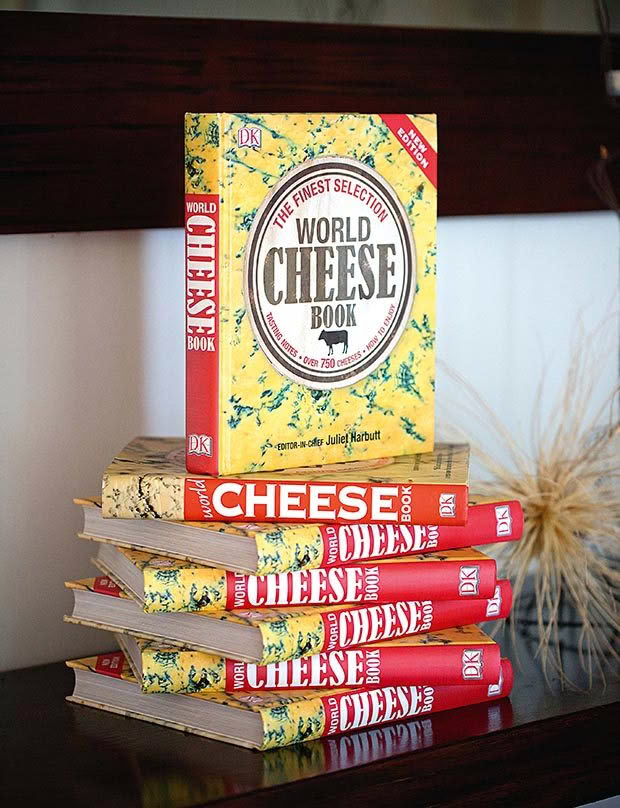
On the other hand, she heaps praise where it’s due: “In New Zealand we have an increasing number of impressive and innovative cheesemakers creating original cheeses that are as good as any I’ve tasted in Europe.”
The best of these invariably form part of her tutored tastings, which are made memorable for the way she describes each style of cheese. How could you ever forget that a sticky washed-rind cheese should taste “like your best-ever cheese sauce with just a hint of beef stock”. Or that sheep’s cheese is distinguished by its “sweet, slightly caramel, soggy sweater, wet-wool flavour.”
There is no doubting her hunger – she is greedy for cheese – but since moving to the Bay she has expanded her interests. “I realized the cheese business wasn’t going to keep me as busy as I anticipated; I needed to do something else.” So what was she going to do to combine her knowledge and the things that she loves? “Well, I love food, I love cooking and I love entertaining people, so I thought, ‘Why don’t I do a tour?’”
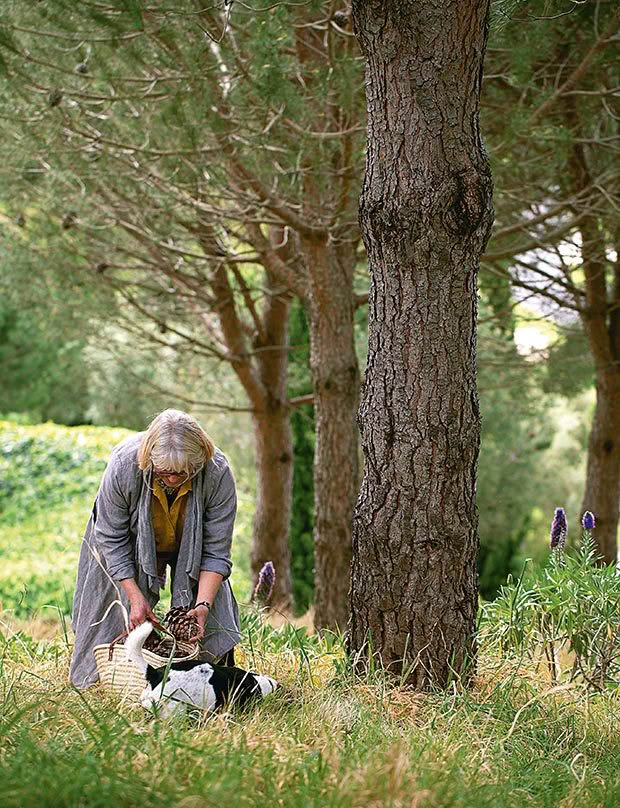
With enthusiastic support of Hawke’s Bay Tourism she launched Hunter Gatherer Tours in July last year. Her tours are boutique, bespoke and personal and include a lunch at her home overlooking the Black Barn estate. “We may go and pick local spinach and watercress and make a soup. We can go to Rush Munro for a chocolate-dipped hokey-pokey ice cream, taste all things figgy at Te Mata Figs, and see the mushrooms growing at Te Mata Mushrooms.”
Her guests can choose to visit the weekend markets, gather whatever’s in season and taste wine at the vineyards. People from overseas are steered towards feijoas, green-lipped mussels and the obligatory bacon-and-egg pie. Local cheese is a highlight, of course, and everyone enjoys gathering pine cones with Winston in Juliet’s garden.
“People are riveted; they can’t believe this is where pine nuts come from,” she says, leading the way past her vegetable beds to the slope where the umbrella pines grow. Winston follows at a trot. He’s mostly up for a game of fetch but he’s good at finding the pine cones, and while he doesn’t care for them himself, he watches with interest as Juliet does her best with the rolling pin – cracking just enough nuts for the cheese board.
See Juliet’s website www.huntergatherertours.co.nz for details on Hunter Gatherer Tours, also cheese classes and bespoke events for professionals, corporates and food lovers.
About Juliet’s Cheese and Wine Experience
Ideal for foodies, tourists, Corporate Entertainment, Team Building or Private Parties, Juliet’s cheese experience beginns at at Black Barn winery for a tasting. Then decamp to Juliet’s home, above the winery, where you will taste your way through Hawke’s Bays’ finest wines, best beers or newest ciders matched with New Zealand’s best artisan cheese.
Accompanied by artisan bread, edible wild flowers from Juliet’s garden and seasonal fruit & vegetables, this is a degustation you won’t want to end. Hilarious, illuminating and sometimes even life-changing. In a career spanning more than 3 decades Juliet’s mission is to convert non-believers and wine buffs into cheese addicts.
Each tasting is private, just for you there are no scheduled tastings and are compliant to government rules around Covid:19
-
You will need to make your own way to Black Barn Winery then on to Juliet’s home 79 Black Barn Rd above the winery
-
2 – 17 people [or up to 150 at another venue Covid:19 regulations allowing]
-
The tasting takes about 3 hours so ideally 1200-1500 or light supper 1630-1930
-
Minimum 18 hours notice, preferably more than 3 days
PRICE $245 for 2 people; $ 50 for each additional person
More details here.
JULIET ON NEW ZEALAND CHEESE FUTURES
What I’d like to see is more artisan cheesemakers making their own unique cheeses and giving them unique New Zealand names rather than calling them brie or manchego. Like the wine industry, when we stopped making wines we called Chablis and Burgundy and just made wonderful Chardonnay and Pinot Noir, we made great wines. So let’s stop trying to emulate Europe; let’s make our own thing.
A favourite cheese from Hawke’s Bay is…
Hohepa’s 18-month aged Danbo. It’s their signature cheese and it’s beautifully made. It’s really chewy and has those lovely calcite crystals. It’s very savoury, not sweet. It has onion notes but there’s a caramelisation to it from the ageing and then it has this long, leisurely finish which I think is absolutely sensational.
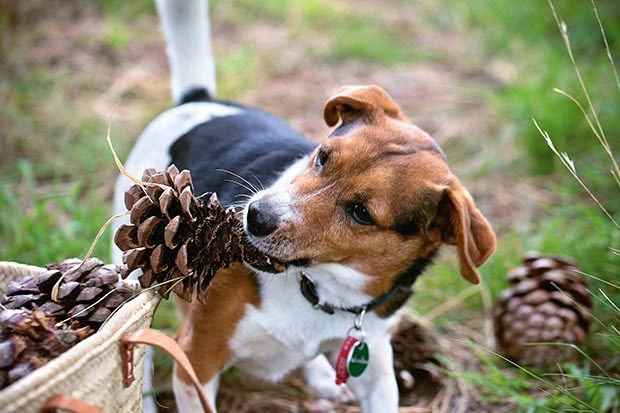
Winston is named after Churchill, the Cotswold village where he lived with Juliet. He loves his new home but didn’t take kindly to the move. “For the first six months every morning he’d sit out on the wall and look down the drive. He was waiting for his mates. It was heartbreaking.”
A favourite from Europe is…
Torta, a small washed-rind cheese from Spain and Portugal. It’s made with sheep’s milk, curdled with stamens from the cardoon thistle instead of rennet. It has an almost leathery rind. You peel it back and eat the almost-liquid interior with a spoon. It has this extraordinary asparagus/artichoke flavour and the texture is seriously to die for.
I don’t know why…
New Zealand cheese is so expensive. As a result people only buy specialty cheese for special occasions. This is what’s holding us back. It’s insane.
You probably didn’t know…
In France when they talk about chèvre, they don’t actually mean any cheese made from goat’s milk, they mean a goat’s milk cheese made with the geotrichum mould, and classic examples come from the Loire. It’s a specific cheese with a wrinkly rind dotted with blue splodges of mould.
My thoughts on raw milk cheese…
Cheese like wine is the ‘fruit’ of the soil and takes its flavour and character from the microclimate in which it’s made – from the minerals in the soil to what the animals eat, even their age and breed. The bacteria, yeasts and moulds in the environment contribute to the final taste and texture. So when you pasteurize the milk, you remove this complexity.
It can, and is, put back in with a carefully selected ‘cocktail’ of all these microbes made up in a laboratory but it’s never as complex or unique. And when you look at the statistics, raw milk is the safest to eat. It’s the ones where the pasteurization system goes wrong that have caused problems in the past. There are three cheesemakers who are making wonderful raw milk cheeses in New Zealand: Mount Eliza, Cwmglyn Farmhouse Cheese and Aroha Organic Goat Cheese.
JULIET’S RICOTTA
In Italy, ricotta is traditionally produced from the whey left over from making cheese like parmigiano reggiano (cow), pecorino (ewe) or mozzarella (buffalo) but it can be made at home with whatever milk you have on hand, as long as it’s full-cream milk.
This wonderful mild but versatile cheese can be baked, spread or served with fruit or salad. If using cow’s or goat’s milk, you may wish to substitute a cup of milk with heavy cream to increase yield. Line a large fine sieve or strainer with cheesecloth (or thick paper towel) and place over large bowl.
Combine 4 cups whole milk and ½ teaspoon sea salt in a saucepan and set over medium heat, stirring frequently. Be sure to run spoon all the way to bottom of saucepan to prevent scorching. Bring liquid to about 88°C (monitor with a cooking thermometer) – just to the point of a simmer – and remove from heat. Do not allow milk to boil.
Immediately mix in 3 tablespoons distilled white vinegar or fresh lemon juice with 3 quick stirs then allow curds to form for 5 minutes without stirring. You should see solids separating from clear liquid.
Carefully pour curds into lined strainer and drain for 10-30 minutes. The longer the cheese drains, the more crumbly it will be. Discard excess liquid. Transfer to an airtight container and cover cheese directly with plastic wrap or foil. Will keep refrigerated for up to a week. Makes 1 cup.
Love this story? Subscribe now!
 This article first appeared in NZ Life & Leisure Magazine.
This article first appeared in NZ Life & Leisure Magazine.
